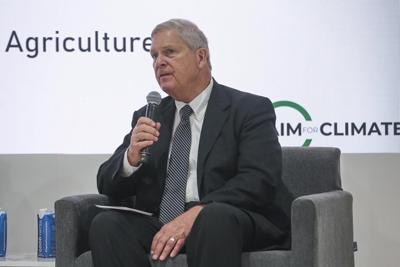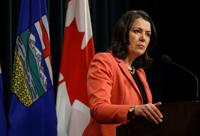DES MOINES, Iowa (AP) — The federal government on Monday announced another $325 million for agricultural projects that are intended to reduce greenhouse gas emissions.
The latest list of 71 recipients for the U.S. Department of Agriculture’s Climate-Smart Commodities program primarily involve small and underserved farmers and ranchers. The payments follow $2.8 billion awarded in September to 70 projects, mostly larger-scale efforts backed by universities, businesses and agricultural groups.
USDA Secretary Tom Vilsack announced the latest round of funding at Tuskegee University, a historically Black college in Alabama, saying it’s vital that small operations benefit from the program.
“It’s important that we send a message that it’s not about the size of your operation, that you don’t only benefit from the programs like this if you’re a large-scale producer,” Vilsack told The Associated Press. “If you’re a producer that historically has not been able to participate fully and completely in programs at USDA, that this program is going to be different.”
The goal of the program is to use financial incentives to expand markets for producers who implement practices that reduce greenhouse gas emissions. More than 1,000 proposals have been submitted to the USDA to participate in the program.
The underserved farmers and ranchers who would benefit from the latest funding are those who are beginners, from socially disadvantaged communities, veterans and those with limited financial resources.
The projects announced Monday, with funding ranging from $250,000 to $4.9 million, include:
— $4.9 million to promote urban, mainly Black, farmers who grow and market crops in Alabama, Louisiana, Michigan, Mississippi and South Carolina.
— $4.9 million to help small and socially disadvantaged farmers in San Diego County, California, by improving soil health through applying compost, reducing tillage of the land and growing trees and shrubs.
— $3 million to help farmers in over 60 Texas counties adopt practices such as regenerative agriculture, which builds healthy soil that is more resistant to drought and heat.
— $4.9 million to help farmers in 10 states and on tribal land grow barley on land using regenerative practices and to pay a premium for crops from those farms.
Agriculture causes an estimated 11% of the nation’s climate-warming emissions, and President Joe Biden has set a goal of cutting greenhouse gas emissions by half in the U.S. by 2030.
Timothy Searchinger, a senor research scholar at Princeton University’s Center for Policy Research on Energy and the Environment, said he welcomes the surge in federal spending to learn how to reduce agricultural emissions and implement practices. However, even as those ideas are tried out in dozens of spots around the country, it still will take years to study the results and replicate what works.
“There are lots of promising ideas, but they are generally not in broad use,” Searchinger said. “There are lots of good ideas about what you can do but they haven’t been proven out.”
After the climate-smart money is awarded, Vilsack said there would be a concerted effort to monitor what programs succeeded and those that struggled so the efforts could be replicated elsewhere in the U.S. and other parts of the world.
“We think this is an effort to really unify this effort on climate, not make it a divisive approach but one that unifies American agriculture and forest landowners and a concerted effort to improve income opportunities, to reduce greenhouse gas emissions, to store carbon, to create healthier soils and clean water,” Vilsack said.








































